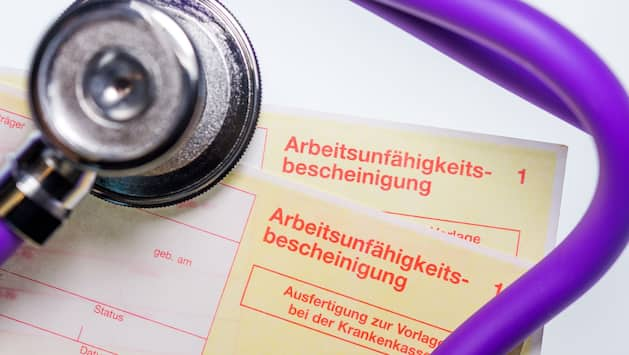Farewell to “yellow bills”. The electronic certificate of incapacity for work has been in effect since January 1st. Employees and employers have to adapt. The five most important questions and answers.
German employees submit 77 million sick notes every year. The “yellow certificate” is common, albeit costly: If you take sick leave, you will receive three certificates of incapacity for work in the doctor’s office – one for the statutory health insurance company, one for the employer and one for yourself. Those with statutory health insurance must then submit the certificates themselves to the health insurance company and submit to employers. That has changed.
On January 1st, the system switched to a so-called electronic certificate of incapacity for work (eAU). The five most important questions and answers.
If you are on sick leave, you do not have to submit the sick note to your employer or your insurance company. You will only receive one hard copy (instead of three) for your personal records.
From January, the doctor’s office will send the sick leave electronically to the statutory health insurance company. The employer can then access this digitally directly from the health insurance company. The following also applies to employees: You must inform your employer about your illness.
This is changing for employers: Employers can usually no longer demand a certificate of incapacity for work from people with statutory insurance, they have to call it up digitally from the communication server of the statutory health insurance companies. To do this, he must transmit various information, such as name, date of birth, insurance number and company number.
2. Who does the electronic certificate of incapacity for work (eAU) apply to?
The eAU applies to everyone with statutory health insurance.
For the time being, nothing will change for privately insured persons and those entitled to benefits. You will continue to receive your certificates of incapacity for work in paper form and you will have to send them to your employer and private health insurance or benefit agency yourself, writes the consumer advice center. There is also no possibility of the eAU for mini-jobbers in private households.
3. What information does the employer get?
The health insurance company only transmits the name of the insured person, the beginning and end of the incapacity to work and the identification as an initial or follow-up notification.
As with the yellow slip, the employer does not find out anything about the diagnosis or the findings with the eAU procedure. What is new is that the treating doctor is no longer named, except on the paper document for personal records.
4. Is the data transmission secure?
The data is transmitted via the telematics infrastructure. The data is transmitted in encrypted form. Access authorization is also checked before the employer accesses the data.
GKV spokesman Helge Dickau also says that data protection is guaranteed. Employers would use certified systems for retrieval from the cash registers.
5. Why might paper printouts still be necessary?
Especially in the introductory phase, it could still jerk a little. The National Association of Statutory Health Insurance Physicians (KBV), for example, feared that from January 2023 not all employers would be technically and organizationally able to call up the inability to work digitally.
FOCUS online therefore recommends: First of all, let the employer give you the sick note. Ideally, you simply put the certificate in your files; if necessary, submit it to the employer.















